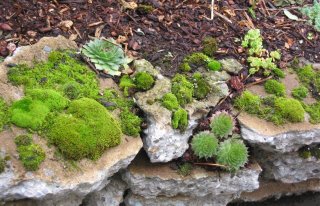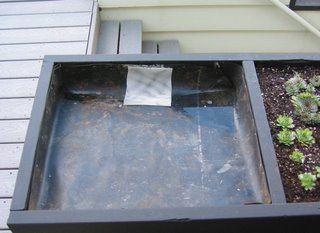 |
| French Marigolds with Foraging Bumblebees. 8.9.15 |
 |
| Container-Grown Milkweed. 8.9.15 |
There is not a lot out there for bees to forage.
Dandelions are having a moderate bloom. On the deck, the large containers of
marigolds attract many bees, continuously. Mostly bumblebees. Given the dearth of bee forage now, I am thinking I should plant some big patches of marigolds next year. Each flower produces a big crop of seeds, so it will cost nothing if I save the seeds.
It looks like they prefer gold to yellow or red. I am not certain about that.
Milkweed has not reached bloom stage. As a perennial, I did not expect that until next year. The plant I grew in container is much larger and more robust, compared to the plants I grew in the ground. There is a big diversity of size and appearance, in keeping with what were probably wild-collected seeds.
Chinese chive is a major attraction for honeybees, more than bumblebees. This variety is the heirloom type I collected as seeds from my parents' yard in Illinois. I know those were there for more than 45 years, because I was the one who planted them. They survived the intervening decades without care, in fact my parents didn't like them, so just mowed along with the rest of the yard. This variety - land race?- is smaller and much later blooming, compared to the commercial Chinese variety Ning obtained. Both are good forage for bees. I will collect more seeds from my Illinois Chinese Chive, intending to have a large patch of those for bee forage in a couple of years.
It's interesting to view the Chinese Chive next to some
Wild Carrot. Both flowers are white, with small flowers. But the bees very much prefer the Chinese Chive.
The second wave of
borage is blooming. Smaller than the first wave. Bees constantly forage the borage. There are 3rd wave borage sprouting from seeds.
The
Joe Pye Weed that I grew from seeds last winter, is making flower buds. The
Anise Hyssop that I grew from seeds is growing, but I doubt they will bloom this year. Perennials are a 2-year investment in time and space, but once established, I don't have to start from seeds again.
 |
| Milkweed Plants Grown In Ground. 8.9.15 |
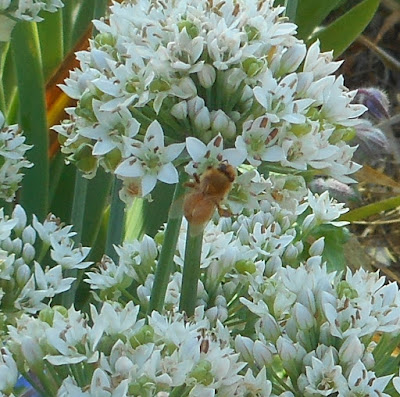 |
| Honeybee on Chinese Chive. 8.9.15 |
 |
| Blooming Chinese Chive. 8.9.15 |
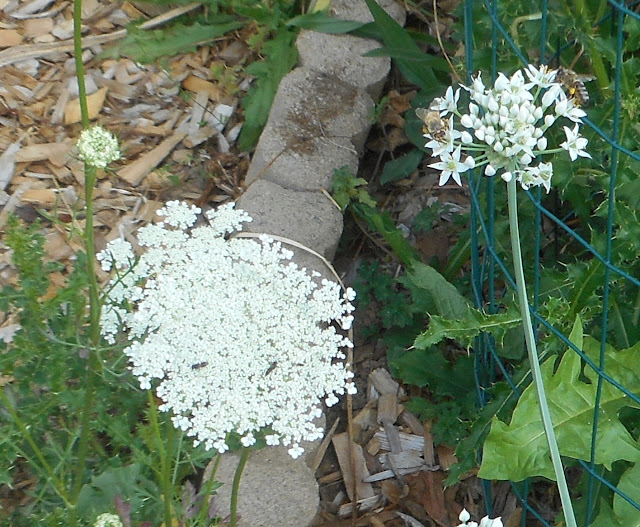 |
| Bees Prefer Chinese Chive to Wild Carrot. 8.9.15 |
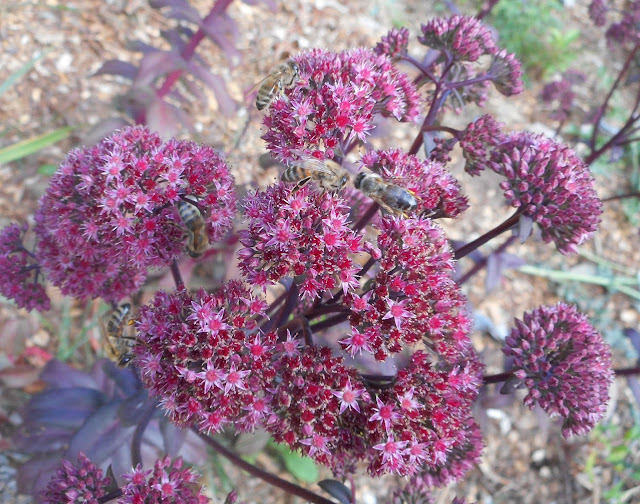 |
| Red Sedum with Honeybees 8.9.15 |
 |
| Red Sedum with Honeybees. 8.9.15 |




































